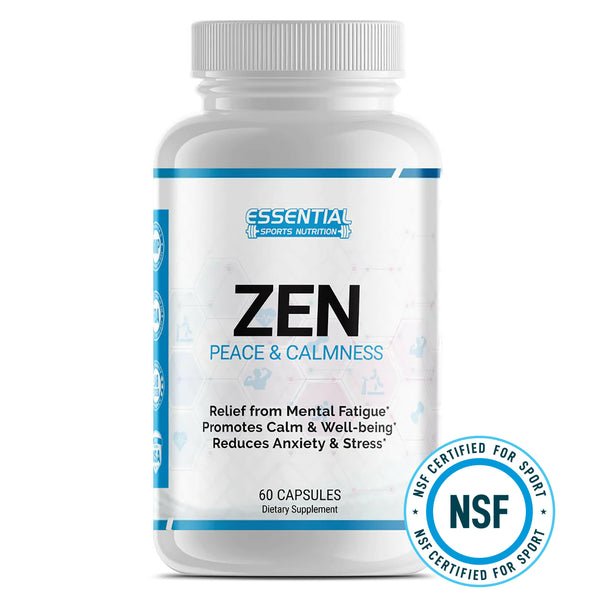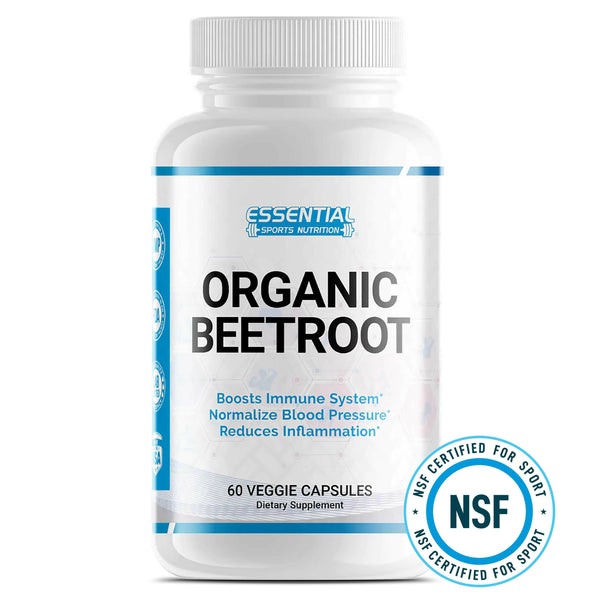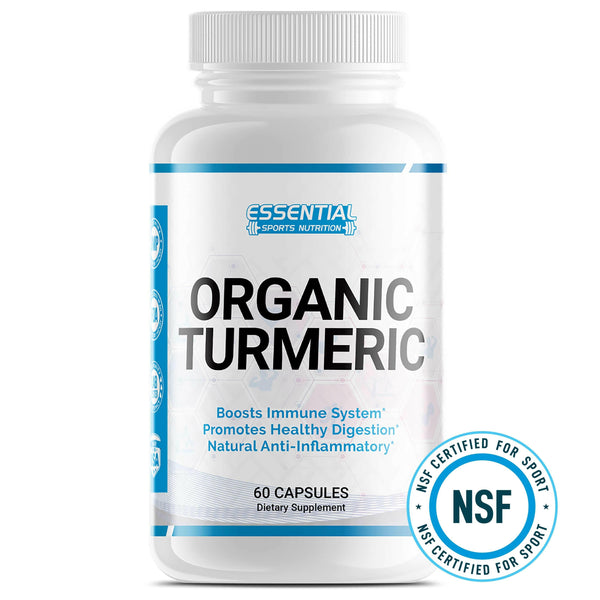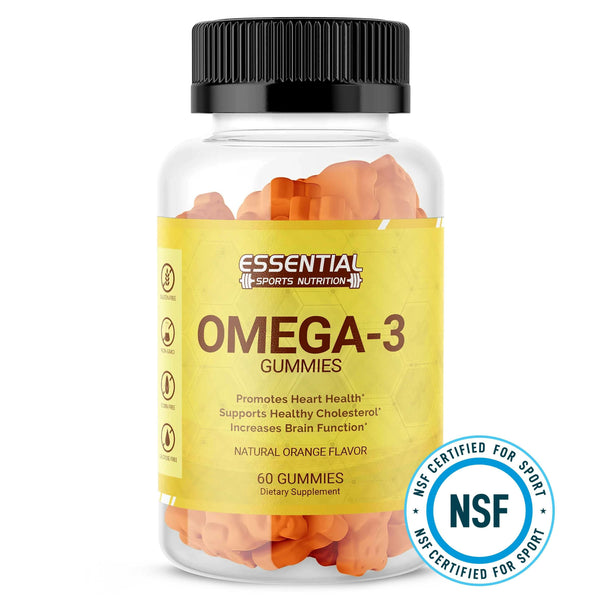Low FODMAP Diet for Sensitive Stomachs and IBS
Welcome to your comprehensive guide on the low FODMAP diet, an IBS-friendly eating plan designed to help manage symptoms and improve gut health. If you suffer from digestive issues such as irritable bowel syndrome (IBS) or have been diagnosed with small intestinal bacterial overgrowth (SIBO), this diet could be a game-changer for you. It can help alleviate digestive symptoms and manage digestive disorders by avoiding certain foods. Let's dive in and explore the world of low FODMAPs, understand their effects on the gut, and discover how this three-step process can lead to symptom relief and a personalized diet that works for you.
Key Takeaways:
-
The low FODMAP diet is a temporary eating plan for individuals with IBS or SIBO to identify trigger foods and reduce symptoms.
-
FODMAPs are short-chain carbohydrates that many people poorly absorb, leading to digestive distress caused by gut bacteria. To alleviate symptoms, an elimination diet may be recommended for patients.
-
The low FODMAP diet involves three steps: elimination, reintroduction, and personalization.
-
High FODMAP foods to avoid include dairy, wheat-based products, legumes, certain vegetables, and some fruits.
-
The low FODMAP diet has proven to be highly effective in reducing symptoms in up to 86% of individuals with IBS.
Understanding FODMAPs and Their Effects on the Gut
FODMAPs are a group of short-chain carbohydrates that can have a negative impact on the gut. These carbohydrates are poorly absorbed by the small intestine, leading to digestive distress in some individuals. FODMAP is an acronym that stands for fermentable oligosaccharides, disaccharides, monosaccharides, and polyols.
Many foods contain FODMAPs, including dairy products, wheat-based products, legumes, certain vegetables, and some fruits. When these low fodmap vegetables and snacks reach the large intestine, they can be fermented by gut bacteria, resulting in the production of gas and other byproducts that cause symptoms like cramping, diarrhea, constipation, bloating, and gas. The Monash FODMAP diet can help identify these trigger foods.
"FODMAPs are short-chain carbohydrates that are poorly absorbed by the small intestine. They can cause digestive distress in some people, leading to symptoms such as cramping, diarrhea, constipation, bloating, gas, and flatulence."
The low FODMAP method is an elimination diet that aims to alleviate these symptoms by removing or reducing high FODMAP foods from the diet. By avoiding these foods, individuals can experience relief from their digestive symptoms and improve their overall gut health.
| FODMAP Category | Examples of Foods |
|---|---|
| Oligosaccharides | Wheat, rye, onions, garlic, legumes |
| Disaccharides | Lactose in dairy products |
| Monosaccharides | Fructose in certain fruits, honey, high-fructose corn syrup |
| Polyols | Sorbitol, mannitol, xylitol, in certain fruits and artificial sweeteners |
The understanding of FODMAPs and their effects on the gut has paved the way for the development of the low FODMAP diet, providing individuals with a dietary approach to manage their digestive symptoms effectively.
The three-step process of the low FODMAP diet

The low FODMAP diet follows a three-step process: elimination, reintroduction, and personalization. This approach is designed to help individuals with digestive disorders such as irritable bowel syndrome (IBS) identify and manage food triggers to alleviate symptoms and improve gut health.
Step 1: Elimination
During the elimination phase, high FODMAP foods are removed from the diet for a period of two to six weeks. This allows the gut to reset and symptoms to improve. High FODMAP foods include dairy-based milk, yogurt, and ice cream, wheat-based products like bread and crackers, beans and lentils, as well as certain vegetables and fruits.
Step 2: Reintroduction
After the elimination phase, one high FODMAP food is reintroduced at a time to identify foods that trigger discomfort. Each food is tested for three days, and symptoms are closely monitored. This process helps individuals understand how their body reacts to different FODMAPs and allows them to create a personalized diet that avoids or limits specific trigger foods.
Step 3: Personalization
Once trigger foods have been identified, the final step is personalization. A customized diet is created that limits or avoids high FODMAP foods that worsen symptoms, while incorporating well-tolerated foods. This personalized diet can be adjusted over time as tolerance to certain FODMAPs may change.
By following this three-step process, individuals can gain better control over their symptoms and improve their overall quality of life. Working with a healthcare professional, such as a doctor or dietitian, can provide guidance and support throughout the low FODMAP journey.
Foods to Avoid and Include on the Low FODMAP Diet

To successfully follow a low FODMAP diet, it is crucial to understand which foods to avoid and include in your meals. By eliminating high FODMAP foods and incorporating low FODMAP alternatives, you can manage your symptoms and promote better digestive health.
Here is a breakdown of high FODMAP foods to avoid:
-
Dairy-based milk, yogurt, and ice cream
-
Wheat-based products like cereal, bread, and crackers
-
Beans and lentils
-
Certain vegetables such as artichokes, asparagus, onions, and garlic
-
Some fruits like apples, cherries, pears, and peaches
On the other hand, here are some low FODMAP foods that you can enjoy:
-
Eggs
-
Meat
-
Certain cheeses
-
Almond milk
-
Grains like rice, quinoa, and oats
-
Vegetables like eggplant, potatoes, tomatoes, cucumbers, and zucchini
-
Fruits such as grapes, oranges, strawberries, blueberries, and pineapple
By referring to this general guide, you can start creating a low FODMAP meal plan that suits your preferences and dietary needs. However, it is important to note that individuals may have varying tolerances to specific FODMAPs, so it is advisable to consult with a healthcare professional for a comprehensive list of high and low FODMAP foods.
Effectiveness and Benefits of the Low FODMAP Diet

The low FODMAP diet has been extensively studied and proven to be highly effective in reducing symptoms in individuals with irritable bowel syndrome (IBS). Research has shown that up to 86% of people with IBS experience significant improvements in their symptoms when following the low FODMAP approach.
By eliminating high FODMAP foods during the elimination phase of the diet, individuals can reduce the intake of carbohydrates that are poorly absorbed in the small intestine. This reduction in FODMAP intake helps to alleviate symptoms such as bloating, abdominal pain, diarrhea, and constipation. The elimination phase typically lasts for two to six weeks, allowing the gut to heal and symptoms to subside.
During the reintroduction phase, high FODMAP foods are systematically reintroduced into the diet one at a time. This allows individuals to identify their trigger foods and determine which specific FODMAPs are causing their symptoms. By personalizing the diet and avoiding or limiting high FODMAP foods that worsen symptoms, individuals can find long-term relief and improve their overall quality of life.
FODMAP Diet Effectiveness Study
"In a randomized controlled trial involving 101 patients with IBS, the low FODMAP diet was found to significantly reduce symptoms compared to a traditional IBS diet. The study reported a 50% reduction in overall symptoms and a 54% reduction in abdominal pain in the low FODMAP group. These results highlight the effectiveness of the diet in managing IBS symptoms."
Benefits of the Low FODMAP Diet
-
Reduces symptoms in up to 86% of individuals with IBS
-
Helps identify trigger foods and specific FODMAPs causing symptoms
-
Allows for a personalized approach to managing symptoms
-
Improves overall quality of life
It is important to note that the low FODMAP diet is not a lifelong eating plan but rather a temporary strategy to help individuals with IBS identify and manage their trigger foods. Working with a healthcare professional, such as a doctor or dietitian, is highly recommended to ensure the diet is followed correctly and to provide ongoing support throughout the process.
Who should try the low FODMAP diet?

The low FODMAP diet is recommended for individuals with irritable bowel syndrome (IBS) and/or small intestinal bacterial overgrowth (SIBO). IBS is a common gastrointestinal disorder characterized by symptoms such as abdominal pain, bloating, and changes in bowel habits. SIBO is a condition in which there is an overgrowth of bacteria in the small intestine. The low FODMAP diet has been found to reduce symptoms in a majority of individuals with IBS and can also help manage symptoms of SIBO.
It is important to consult with a healthcare professional, such as a doctor or dietitian, before starting the low FODMAP diet to ensure that it is appropriate for your specific situation. They can provide guidance on how to properly implement the diet and monitor your progress. Additionally, they can help tailor the diet to your specific needs and provide alternatives to high FODMAP foods to ensure a nutritionally balanced diet.
While the low FODMAP diet may not be suitable for everyone, it can be a valuable tool for those who suffer from IBS or SIBO. It is always best to work with a healthcare professional to determine the best course of action for managing your symptoms and improving your gut health.
Working with a Healthcare Professional on the Low FODMAP Diet

When embarking on the low FODMAP diet, it is highly recommended to work closely with a healthcare professional, such as a doctor or dietitian. These professionals have the expertise and knowledge to provide guidance and support throughout the process, ensuring that the diet is followed correctly and that proper nutrition is maintained.
Consulting with a healthcare professional is particularly important because the low FODMAP diet can be complex and challenging to navigate on your own. They can help determine the length of the elimination phase and guide the reintroduction process, ensuring that it is done in a controlled and systematic manner. They can also offer personalized advice based on your individual needs and preferences, helping you create a customized diet plan that suits you best.
Working with a healthcare professional increases the likelihood of success on the low FODMAP diet. They can monitor your progress, adjust the plan as needed, and provide ongoing support to address any concerns or challenges that may arise. They will also ensure that you are receiving all the necessary nutrients while following the diet, mitigating the risk of deficiencies and promoting overall health and well-being.
Benefits of Working with a Healthcare Professional
“Collaborating with a healthcare professional can enhance your experience with the low FODMAP diet. They provide guidance, support, and ensure the diet is customized to your needs.”
In summary, seeking the expertise of a healthcare professional when undertaking the low FODMAP diet is highly advised. Their knowledge and guidance can help maximize the benefits of the diet, ensure proper nutrition, and provide ongoing support throughout the process. By working together, you can effectively manage your symptoms and improve your overall well-being.
Other Therapies for Managing IBS Symptoms
While the low FODMAP diet can be an effective approach for managing IBS symptoms, it is often used in conjunction with other therapies. These additional treatments can provide further relief and support for individuals with IBS.
"There is no one-size-fits-all approach to managing IBS, and it's important to explore different therapies to find the best combination for each individual," explains Dr. Smith, a gastroenterologist specializing in IBS treatment.
One common adjunct therapy is the use of antibiotics to reduce bacterial overgrowth in the small intestine, particularly in cases of SIBO. Antibiotics can help rebalance the gut microbiome and alleviate symptoms such as bloating and abdominal pain.
In cases of constipation-predominant IBS, laxatives may be prescribed to promote regular bowel movements and relieve discomfort. Laxatives can help soften stool and stimulate intestinal contractions, making it easier to pass bowel movements and reducing the frequency of constipation episodes.
Stress management techniques are also important in managing IBS symptoms, as stress and anxiety can exacerbate gastrointestinal symptoms. Mindfulness practices, relaxation exercises, and therapy can help individuals develop coping mechanisms and reduce the impact of stress on their digestive system.
| Therapy | Description |
|---|---|
| Antibiotics | Prescribed to reduce bacterial overgrowth in the small intestine, particularly in cases of SIBO. |
| Laxatives | Used to relieve constipation and promote regular bowel movements. |
| Stress Management | Incorporating mindfulness practices, relaxation exercises, and therapy to reduce the impact of stress on the digestive system. |
These additional therapies, when combined with the low FODMAP diet, can provide a comprehensive approach to managing IBS symptoms. It is important to work with a healthcare professional to determine the most appropriate combination of therapies for individual needs. By addressing various aspects of IBS, including diet, gut health, and stress management, individuals can achieve better symptom control and improve their quality of life.
Importance of Proper Nutrition and Consultation
While the low FODMAP diet can be beneficial for individuals with IBS, it is crucial to prioritize proper nutrition to maintain overall health. The diet's restriction of certain high FODMAP foods may lead to potential nutrient deficiencies if not carefully managed. This is where the guidance and expertise of a healthcare professional, such as a doctor or dietitian, come into play. They can provide personalized advice on how to maintain a well-balanced diet while following the low FODMAP approach.
Consulting with a healthcare professional is particularly important for individuals with specific nutritional needs or concerns. These professionals can address any potential issues related to vitamin and mineral deficiencies that may arise from eliminating certain food groups. They can also recommend suitable alternatives to restricted foods to ensure adequate nutrient intake. Working closely with a healthcare professional ensures that the low FODMAP diet is followed correctly and that optimal nutrition is maintained throughout the process.
Furthermore, the expertise of a healthcare professional goes beyond nutrition. They can provide comprehensive care by considering individual needs, preferences, and potential interactions with any existing medical conditions or medications. They can also tailor the low FODMAP diet according to personal tolerances, making it a sustainable and effective approach to managing IBS symptoms.
The Role of a Healthcare Professional in the Low FODMAP Diet
A healthcare professional can:
-
Evaluate the appropriateness of the low FODMAP diet for an individual's specific situation.
-
Guide the individual through the three-step process of the low FODMAP diet: elimination, reintroduction, and personalization.
-
Provide education on FODMAPs, trigger foods, and suitable alternatives.
-
Monitor the individual's progress and make necessary adjustments to the diet plan.
-
Offer support and address any concerns or challenges that may arise during the diet.
Proper consultation with a healthcare professional is essential for a successful and effective low FODMAP diet. It ensures that individuals receive the necessary guidance and support to navigate the diet safely and maintain optimal nutrition. By working closely with a healthcare professional, individuals can confidently manage their IBS symptoms and improve their overall well-being.
| The Role of a Healthcare Professional |
|---|
| Evaluate appropriateness of the low FODMAP diet |
| Guide through the three-step process |
| Provide education on FODMAPs |
| Monitor progress and make necessary adjustments |
| Offer support and address concerns |
Conclusion
The low FODMAP diet provides a promising solution for individuals suffering from irritable bowel syndrome (IBS) by effectively managing their symptoms and improving their overall quality of life. By eliminating high FODMAP foods and reintroducing them in a systematic manner, individuals can identify their trigger foods and personalize their diet to minimize symptoms. This structured approach allows for a better understanding of the relationship between FODMAPs and digestive distress.
Collaborating with a healthcare professional, such as a doctor or dietitian, is crucial throughout the low FODMAP diet journey. These professionals can offer guidance, support, and valuable knowledge to ensure the diet is implemented correctly and maintains proper nutrition. Their expertise helps individuals strike a balance between symptom management and maintaining a well-rounded diet.
While the low FODMAP diet may not be suitable for everyone, for those who benefit from it, it has the potential to be a valuable tool in managing IBS and promoting overall gut health. By empowering individuals to make informed choices about their dietary intake, the low FODMAP diet enables them to regain control of their well-being and lead a more comfortable and fulfilling life.
Low and High FODMAP Foods FAQS
Q: What is a low-FODMAP diet?
A: A low-FODMAP diet is a diet specifically designed to help people with irritable bowel syndrome (IBS) by eliminating certain types of carbohydrates that are poorly absorbed in the small intestine.
Q: What does FODMAP stand for?
A: FODMAP stands for fermentable, oligosaccharides, disaccharides, monosaccharides, and polyols. These are a group of short-chain carbohydrates and sugar alcohols that can trigger IBS symptoms in some individuals.
Q: What are examples of low-FODMAP foods?
A: Examples of low-FODMAP foods include bananas, strawberries, carrots, spinach, rice, oats, and lactose-free dairy products.
Q: What are high-FODMAP foods?
A: High-FODMAP foods include certain fruits (such as apples, cherries, pears), certain vegetables (such as onions, garlic, asparagus), wheat products, legumes, and some dairy products.
Q: How can a low-FODMAP diet help with IBS symptoms?
A: By eliminating high-FODMAP foods, the low-FODMAP diet can reduce symptoms like bloating, gas, diarrhea, and abdominal pain in individuals with irritable bowel syndrome (IBS).
Q: Can everyone with IBS benefit from a low-FODMAP diet?
A: No, not everyone with IBS will benefit from a low-FODMAP diet. It is important to consult with a healthcare professional or a registered dietitian before starting this diet to ensure it is suitable for individual needs.
Q: How should I follow a low-FODMAP diet?
A: It is recommended to follow a low-FODMAP diet under the supervision of a registered dietitian to ensure that the diet is well-balanced and meets individual nutritional needs while avoiding high-FODMAP foods.
Q: What is the connection between a low-FODMAP diet and a gluten-free diet?
A: A low-FODMAP diet may also be gluten-free, but not all gluten-free diets are low-FODMAP. While both diets may overlap in some aspects, they target different components for individuals with IBS or gluten sensitivities.
Q: Where can I find a list of low and high-FODMAP foods?
A: Monash University provides a comprehensive list of low and high-FODMAP foods, which is widely recognized and used as a resource for individuals following a low-FODMAP diet.
Q: Should I eliminate all high-FODMAP foods from my diet?
A: It is not necessary to completely eliminate all high-FODMAP foods from your diet. A low-FODMAP diet aims to reduce high-FODMAP foods rather than eliminate them entirely, as small amounts of some high-FODMAP foods may be tolerated.























